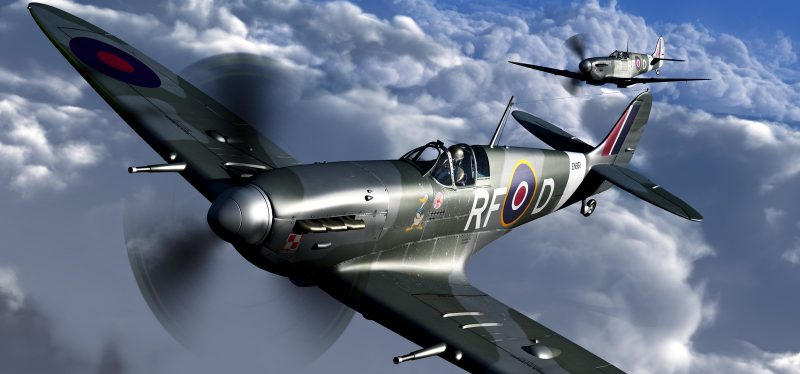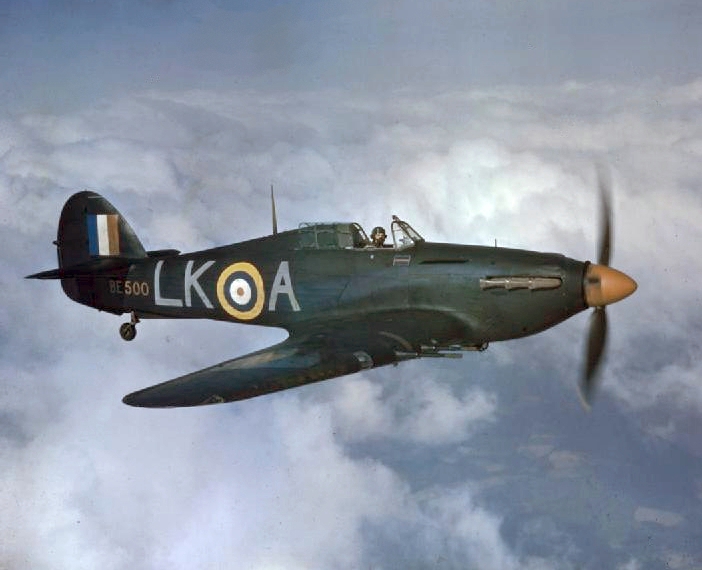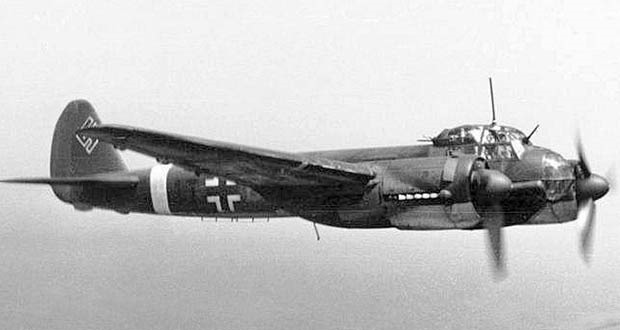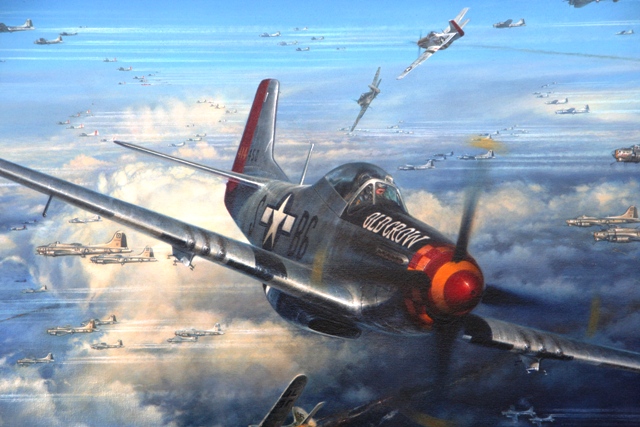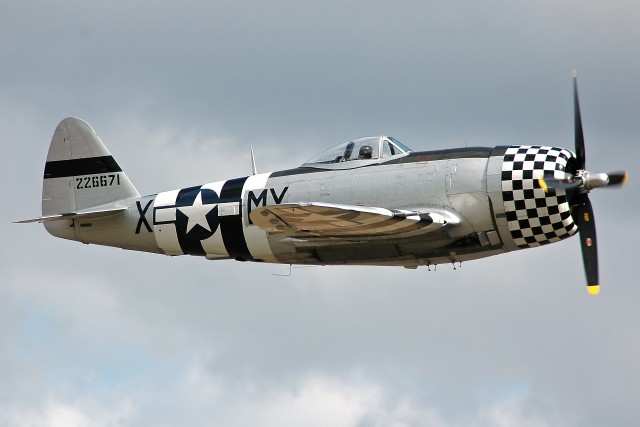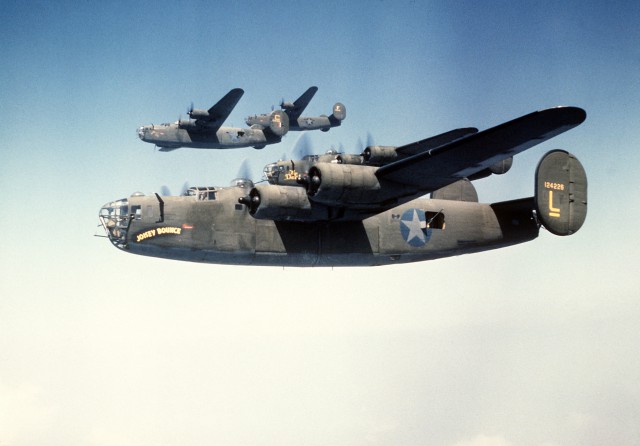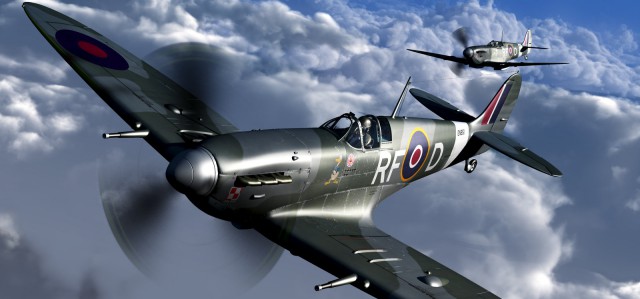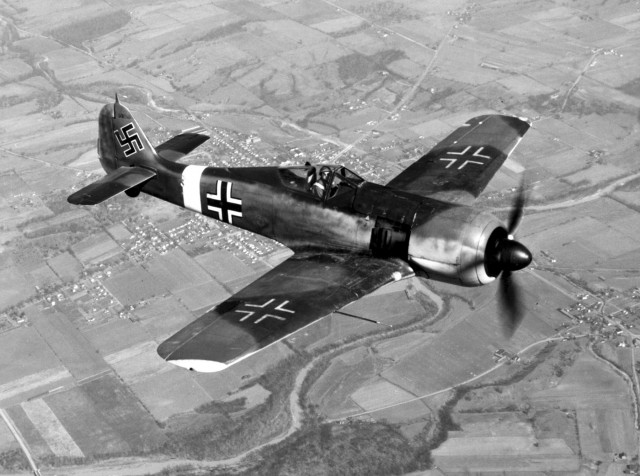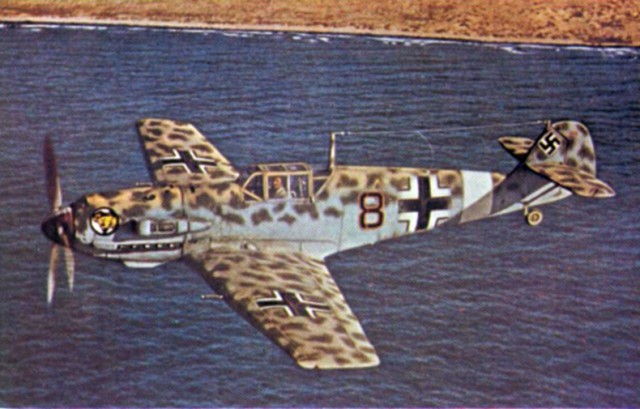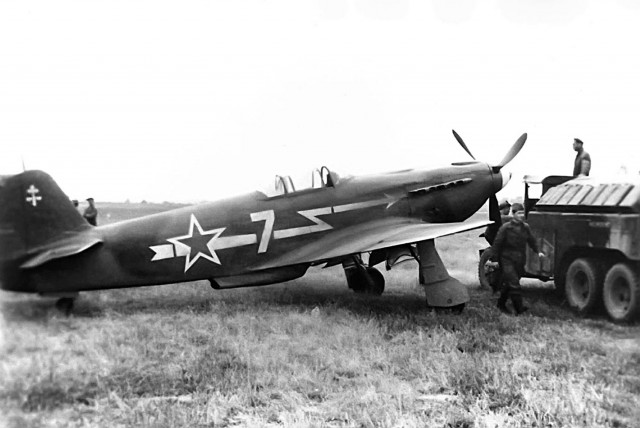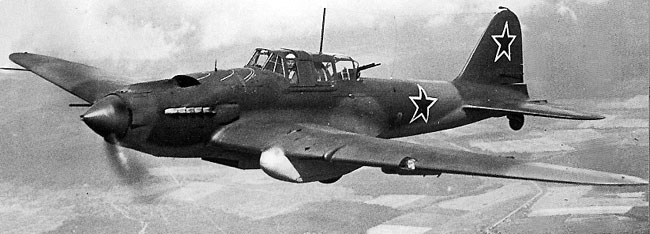Manufacturers in World War II were engaged in the greatest industrial effort in history. Aircraft companies went from building a handful of planes at a time to building them by the thousands on assembly lines.
Below is a list of the most produced Warbirds of WWII.
10. Hawker Hurricane – 14,533 Units
Known as the workhorse of World War Two, the Hawker Hurricane was part of the reason Allied forces were able to gain victory. The Hurricane was crucial to airborne fighting, especially early on in the war during such conflicts as the Battle of Britain. It was manufactured from 1937-44, in service for almost the duration of the war.
The Hurricane can fly at a maximum speed of 340 mph, at a range of around 470 miles and altitude of 35,000 ft. It is around 31 ft long, 13 ft high and 40 ft across the wings.
Almost 15,000 Hurricanes were made overall, today around 13 remain which can still fly, while many non-flyable examples are on display in museums.
9. Junkers Ju-88 – 15,000 Units
The Junkers Ju 88, was one of the fastest bombers that saw service in the Second World War. With a top speed of over 300 MPH, it designed to fly faster than the fighters which were then able to intercept it.
It became one of the most versatile combat aircraft of the war, being used as a bomber, dive bomber, torpedo bomber and even a night fighter. It was in service with the Luftwaffe all through the war.
8. P-51 Mustang – 15,875 Units
The P-51 Mustang Fighter, a North American Aviation, is one of the most iconic fighter / fighter bombers that is single-seated and was used during World War 2. In total over 15,000 of these were manufactured.
The Mustang was designed originally to be used with the Allison V-1710 engine – making it a very good aircraft. When the B & C models were made of the P-51, they added a Rolls Royce Merlin engine and this completely transformed its performance at high altitude (15,000+ feet) which meant it matched or even bettered that of the Luftwaffe’s fighter jets.
The final version of the P-51 was the P-51D, and this was powered by yet another engine, the Packard V-1650-7, and was fully armed with .50 caliber M2 machine guns (6 in total on each jet).
From late in 1943 P-51’s were used to escort bombers in raids over occupied Europe and over Germany, all the way to Berlin. The P-51’s with the Merlin engines were also used as fighter-bombers which made sure that the Allied ruled supreme in the air in 1944.
The P-51 was also used in service with Allied air forces in Italian, Mediterranean and North African areas of service and also saw action in the Pacific War against the Japanese. Within World War 2, P-51 pilots claim to have shot down 4,950 enemy aircraft.
7. P-47 Thunderbolt – 16,231 Units
The Thunderbolt was one of the heaviest and largest fighter planes ever built; it was also only powered by a single piston engine. It was only built from 1941-1945 and was equipped with eight .50-calibre machine guns, four per wing which were absolutely devastating.
When it had a full payload the Thunderbolt weighed around 8 tons; it would carry five-inch rockets or just a single bomb that weighed 2,500 pounds; it could even carry over half of the B-17 which was insane for a fighter plane.
It even out killed the P-51 Mustang during the first three months of 1944, having 540 kills to the Mustang’s 389, but eventually the Mustang over took it in kills, 972 for the Mustang and 409 for the P-47 in the second quarter of the year. The Thunderbolt even flew more attack missions than the P-51s, P-40s and P-38s combined.
Not only was the Thunderbolt one of the main fighters for the U.S. in World War II, but also served with the British, French, and Russians. Brazilian and Mexican squadrons were given the P-47 instead.
The cockpit was roomy and very comfortable, the pilot had an amazing line of sight. Even today the Thunderbolt name lives on with the Fairchild Republic A-10 Thunderbolt II.
6. B-24 Liberator – 18,482 Units
The B-24 Liberator was, together with the B-17, the workhorse of the United States Army Airforces who used it in every theater of operations. It was also instrumental in the Battle of the Atlantic, where it’s long range enabled it to close the Mid-Atlantic Gap. Twelve thousand B-24s saw service with the USAAF, at the peak, in September 1944 there were 6,043 active!
It featured a very modern design featuring a shoulder-mounted “Davis wing,” which gave the Liberator long-range, a high cruise speed, and the ability to carry a heavy bomb load. For defense, the B-24 carried up to 10 .50 caliber M2 Browning machine guns which were located in the waist or in turrets.
It was less robust than the B-17 and the aircrews tended to prefer the B-17, General Staff favored the B-24.
5. Spitfire – 20,351 Units
The Spitfire is most likely the most famous aircraft from the World War II era. It was the king of low-altitudes, it will be known forever as the plane that turned the tide in the Battle of Britain.
Its main foe in that battle was the 109, the Spitfire made the Germans stay low with their bombers, which was not ideal for the 109 but it was perfect for the Spitfire.
In the Battle of Britain, the Spitfire gained fame by having the highest victory-to-loss ratio among British aircraft. Bob Tuck (27 kills), Johnnie Johnson (34 kills) and Douglas Bader (20 Kills) were the ace fighters in that battle.
The Spitfire was also the most produced fighter for the British and was continuously produced throughout the war.
4. Fw 190 – 29,001 Units
The 190 is literally one of the best fighters of all time, no Allied plane that fought against it will ever forget what it could do. It was introduced in 1941; the fighter almost immediately started to tear through the RAF and was putting down major punishment of Allied bombers.
The 190 was highly respected by all the Allied pilots and it was a perfect fighter, fighter-bomber, and anti-tank aircraft. Oberleutnant Otto Kittel – who was an amazing pilot – scored almost all of his 267 killed in a 190.
The 190 was a single-engine, single-seat fighter designed by Kurt Tank. It had a counterpart, the Messerschmitt Bf 109, but the 190 became the backbone of the Luftwaffe’s Jagdwaffe (Fighter Force).
It was powered by a BMW engine and because of this it was able to lift larger loads than the 109, it also allowed it to be used as a night-fighter, day-fighter, ground-attack aircraft, and fighter-bomber.
3. Messerschmitt Bf 109 – 30,480 Units
If you look at Aviation history then you will see that the 109 was one of the best planes of all time. It even rivaled the British Spitfire, which is an amazing feat.
It was graceful in the air as a dancer, no other plane could even touch it in high altitudes, however when it accompanied bombers over Great Britain it usually fought at low altitudes, which it was not made for. It carried 20mm cannons, and it would become the most important fighter plane in the Luftwaffe.
The 109 was a German World War II fighter aircraft designed by two men by the names of Robert Lusser and Willy Messerschmitt during the 1930s. The 109 was one of the only true modern planes in the war; it included features such as a retractable landing gear, all-metal monocoque construction, and a closed canopy. It was actually powered by a liquid-cooled, inverted-V12 Aero engine.
It was first used in the Spanish Civil war and even stayed in use until the dawn of the jet age near the end of World War II; it was still the backbone of the Luftwaffe’s Fighter Force. Slowly but surely it was being replaced by the superior Focke-Wulf Fw 190.
The original plan for the 109 was for it to be an interceptor, but later models were built for a variety of tasks, fighter-bomber, day-fighter, night-fighter, all-weather fighter, recon plane, ground-attack aircraft and of course a bomber escort.
2. Yakovlev Yak-3 – 31,000+ Units
The Soviet Yak fighter (Yakovlev Yak-3) was a Soviet dogfighter that was used in World War 2. This was a robust craft, and its maintenance was very easy therefore making it liked by all ground crew and pilots. They were first developed in 1941 but didn’t see service until three years later, 1944. Their main use was as tactical fighters, engaging in dogfights in the lower sky (13,000 ft and lower).
The Yak was considered to be one of the lightest and smallest aircraft to be used as a major combat fighter from all the other combat fighters that were used during World War 2. It provided excellent performance due to its power-to-weight ratio, which was extremely high.
World War 2 French ace, Marcel Albert, considered the Yak to be a far superior aircraft to the Spitfire and P-51D Mustang, having flown the Yak in the USSR.
Following the end of the War, the Yak flew with the Polish and Yugoslav Air Forces and then, in 1952, retired from service.
1. Ilyushin Il-2 – 36,183 Units
The Soviet Unions Ilyushin Il-2 Sturmovik ground-attack aircraft was the most produced military aircraft in aviation history. Designed in 1940, production started early in 1941 but by the time the Nazis invaded there were only 249 available.
After the factories were moved out of range of the Germans production soon skyrocketed and the IL-2 became ” as essential to the Red Army as air and bread,” as Stalin put it. Because of the heavy armor protection, the IL-2 could survive a massive amount of damage and still return to base, making it popular with the crews.
Because of heavy losses a rear gunner was added, first as a field modification but was later incorporated into the design, which was a welcome addition to stave off enemy fighters.
With two cannons and two machineguns firing forward and the ability carry up to 1,320 lb of bombs and a total of 12 rockets, the IL-2 was a feared and respected aircraft that was able to punch through the top armor of even the heaviest tanks of the German Army.
